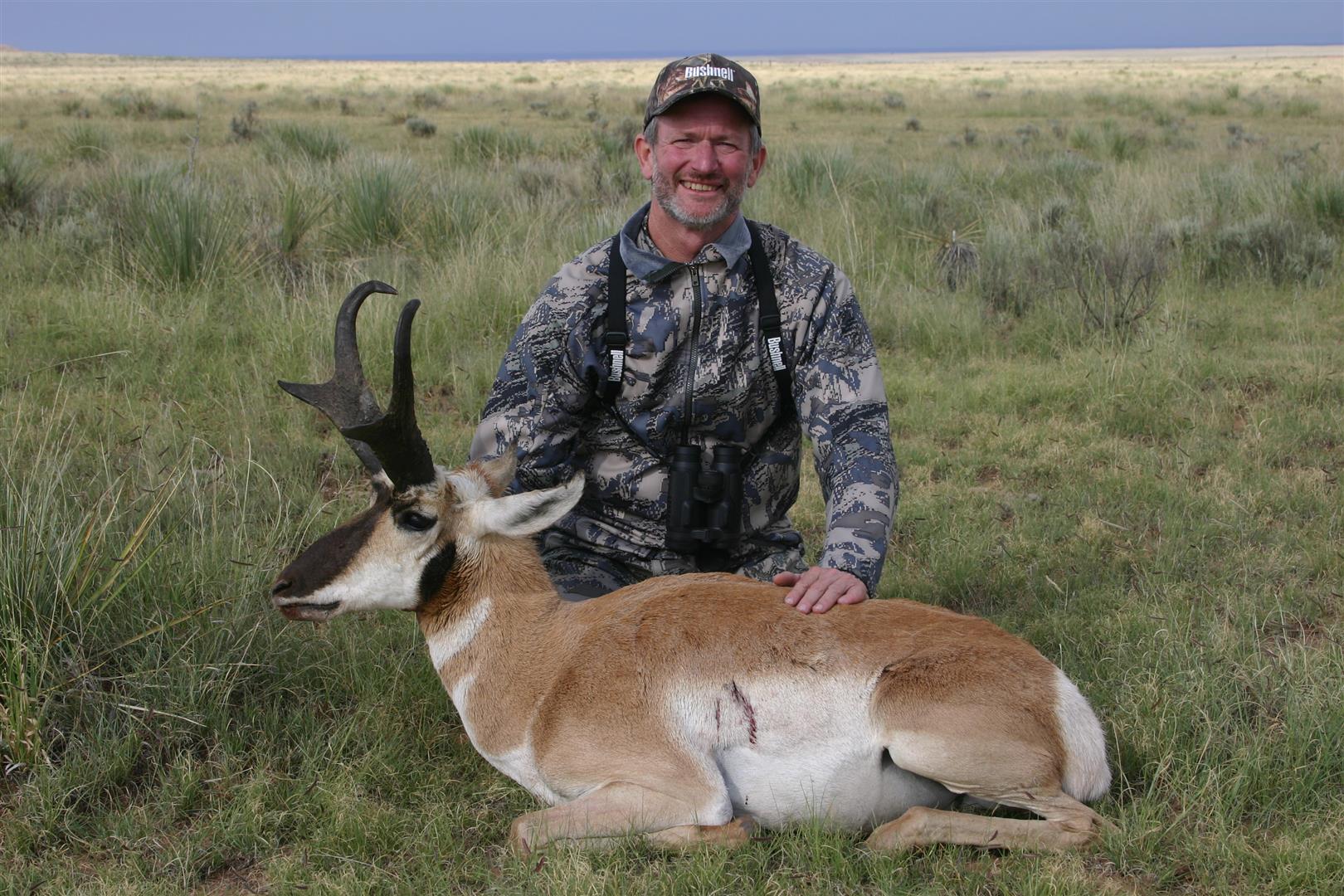Now is when many serious, big-game hunters start planning fall hunting trips. Out West, part of that process means applying for limited-entry tags for various species. These applications are usually due sometime in the next few months, depending on the state you’re applying in and species you’re applying for. In so doing, you’ll want to figure out your best chance to tie a tag around the biggest specimen possible.
With that in mind, you might consider pronghorn hunting. It’s great fun, but where do you find the biggest bucks?
My research always starts by looking at record books. Of course you have to dive deeper than this to get a true picture, but it’s a great way to begin. According to the latest Boone and Crockett Club’s (B&C) record book, record pronghorn have most often been taken from these top-10 counties. Keep in mind, it takes a score of 82 to qualify for the all-time book.
1) Wyoming, Carbon County -- 282 pronghorn in B&C records
2) Wyoming, Sweetwater County --183 pronghorn in B&C records
3) Wyoming, Fremont County -- 153 pronghorn in B&C records
4) Wyoming, Natrona County -- 142 pronghorn in B&C records
5) Arizona, Coconino County -- 128 pronghorn in B&C records
6) New Mexico, Socorro County --117 pronghorn in B&C records
7) Nevada, Washoe County -- 114 pronghorn in B&C records
8) Texas, Hudspeth County -- 106 pronghorn in B&C records
9) New Mexico, Mora County -- 99 pronghorn in B&C records
10) Arizona, Yavapai County -- 92 pronghorn in B&C records
The All-American Pronghorn
The all-American pronghorn, Antilocapra Americana, means "antelope-goat." However, it’s not related to antelope, goats or sheep. Instead, it’s the sole remaining member of an ancient family dating back 20 million years.
A species only found in North America, here’s how pronghorns were described in 1804 by legendary explorer Meriwether Lewis:
“We found the antelope shy and watchful insofar as we were unable to get a shot at them. I got within about 200 paces of them when they smelt me and fled .... the antelopes which had disappeared into a steep ravine now appeared at a distance of about three miles. So soon had these antelopes gained the distance that at first I doubted they were the same I had just surprised, but soon my doubts vanished when I beheld the rapidity of their flight along the ridge before me. It appeared rather the rapid flight of birds than the motion of quadrupeds.”
I made my first pronghorn hunt in the late 1970s as a Californian who went to eastern Montana at the invitation of some friends who had family there. We hunted roughly between Jordan and Ft. Peck Reservoir, making the trip every year for almost a decade. In those days, you could easily obtain a buck tag. Doe tags were so cheap they were almost free. I think you could get up to three of them then but — whatever it was — I always did. I was motivated as much by the delicious meat as the chance to keep hunting.
Not knowing much about hunting pronghorn except what I'd read — that you needed to shoot a long ways, which in later years I found to be mostly untrue — I had my rifle dialed in for sniper work. Instead, I ended up making a shot of about 75 yards on a buck herding his harem under the bottom strand of a barbed wire fence.
I probably could have killed him with a rock.
The first time I arrowed a pronghorn was in the early 1980s in western Montana on a spot and stalk hunt. I blew exactly nine different attempts before making it happen but, when it did, I crowed like the baddest rooster in the Madison River valley. I’ve been hooked on bowhunting them since.
I can't tell you how many pronghorn, both bucks and does, I've shot since that time or how many I've seen others take. But it’s been a lot. Pronghorns have always fascinated me. Early on, I made it a point to read as much about what they are and how they lived as I did about how to hunt them.

Bob Robb took this near-record book qualifying pronghorn in New Mexico; it scored 78 Boone & Crockett points.
Pronghorn Field Guide
To say pronghorn are fast is like saying Giselle Bündchen is hot, Clayton Kershaw throws heat, Hitler was a bad guy -- a classic understatement. In fact:
- They are the second fastest land animal in the world, surpassed only by the cheetah.
- They have been clocked at 70 mph for up to four minutes at a time
- And can cruise at 30 mph.
- They rely primarily on this blazing speed and their extremely acute eyesight as their first line of defense against predation.
- They have a tremendous sense of smell, and will bugger off if you don't play the wind.
For years I'd make a stalk, belly-crawl to the top of the rise where I was sure I could get a shot. But I'd only find the animals long gone. "Wow!" I used to think, then "howtheheck did they see me?"
The answer is, they didn't. But a snoot-ful of my B.O. was enough.
I have also learned that while the eyes are incredible — after opening day of gun season I've seen herds of pronghorn hit high gear at the sight of a pickup topping a rise two miles away — you can minimize their effectiveness. I like to cut a small sagebrush bush and place it in front of my face as I belly-crawl as slow as a snake to the top of the hill before peeking over. I've done this many times to watch bands of pronghorn — for as long as I want — at under 100 yards.






